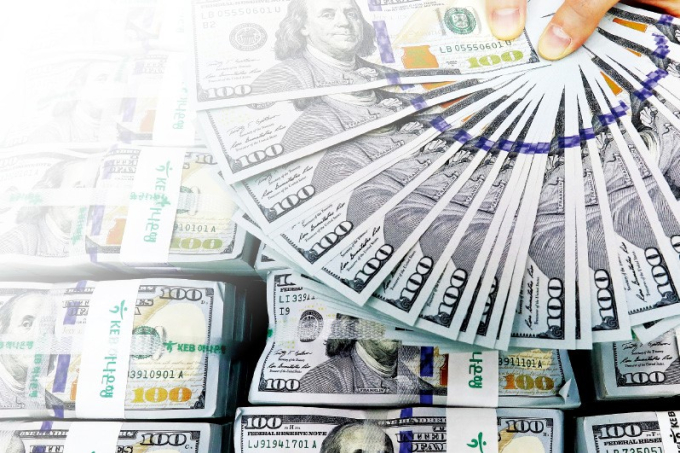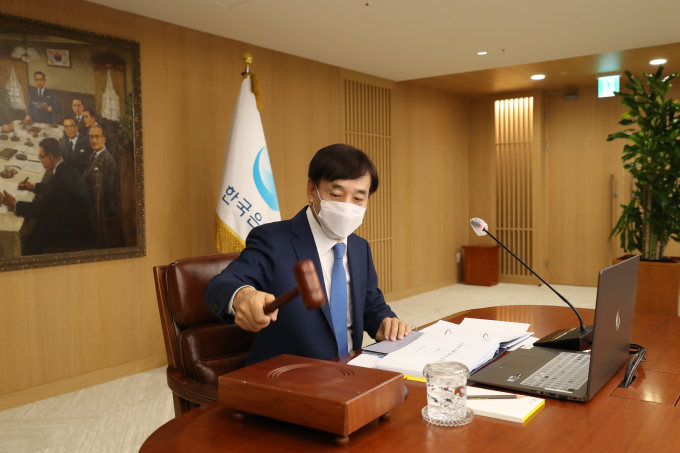Treasury yields
KoreaŌĆÖs treasury yields climb on hopes of vaccines, more bond issues
By Dec 20, 2020 (Gmt+09:00)
3
Min read
Most Read
Samsung shifts to emergency mode with 6-day work week for executives


CJ CheilJedang to sell feed, livestock unit for $1.4 bn


Samsung Electronics' key M&A man returns; big deals in the offing


Affinity to buy SK Rent-a-Car at $572 mn, more deals expected


Keppel REIT to sell Seoul-based prime office T Tower



South KoreaŌĆÖs treasury yields are heading higher as advances in vaccine development and concerns over increased government bond sales prompt foreign and institutional investors to unload their bond holdings.
According to the Korea Financial Investment Association on Dec. 20, the yield on the 3-year government note finished at a near eight-month high of 0.999% on Thursday, although it shed 0.036 percentage point the following day. The 3-year yield has been on an ascending trend since posting a record low of 0.795% on Aug. 5.
The yield on the 10-year state bond climbed to the highest point in 11 months at 1.732% on Thursday.
Yields, which move in the opposite direction of bond prices, tend to decline in line with lower market interest rates when the economy is in a slump.
STEEPENED YIELD CURVES
However, major Korean treasury yield curves have steepened even as the Bank of Korea maintained its policy rate at a record low level. The central bank has kept the benchmark interest rate steady at 0.5% since May following deep cuts earlier this year from 1.25% as the local economy was staggering from the COVID-19 fallout.
Market analysts say the rise in treasury yields is due to an improved economic outlook following progress in vaccine development and stimulus packages by developed nations, triggering a cash outflow from safe-haven treasuries into riskier assets such as stocks.
Yields are also rising on expectations of increased state bond issues next year.
The finance ministry plans to sell 176.5 trillion won ($161 billion) in treasuries in 2021 to finance projects aimed at revitalizing the sagging local economy. The planned treasury issuance is up a mere 1.9 trillion won from this year, but much higher compared to the 100 trillion won a year in treasury sales, on average, between 2016 and 2019.
The increased treasury sale is to help finance a supersized 2021 national budget of 558 trillion won, up 8.9% from this year.

ŌĆ£Expectations of an economic recovery will likely boost bond yields going forward. The fiscal expansion in Korea and abroad will also lead to increased volatility, with more supplies in the fixed income market,ŌĆØ said Vice Finance Minister Ahn Il-hwan during a treasury issuance meeting earlier this month.
Foreign investors sold 22,683 contracts of 3-year treasury futures worth 2.27 trillion won in face value and 28,363 contracts of 10-year futures worth a face value of 2.84 trillion won in the 18 days of December. Their divestments followed heavy sales of 3-year and 10-year state bonds in the previous month.
REDUCED FX ARBITRAGE GAINS
Analysts attributed the bond sales to their year-end book closing, but said smaller arbitrage gains in the wake of the wonŌĆÖs strength versus the dollar also played a role.
The dollar-won swap rate was hovering around minus 0.54% until October, allowing foreign investors to book foreign exchange gains when converting the greenback into the Korean currency to buy local bonds. But such rates have since turned positive, posting 0.07% in November and 0.1% this month.
ŌĆ£ForeignersŌĆÖ recent bond sales are linked to reduced FX arbitrage gains amid signs of improving business conditions,ŌĆØ said a BOK official.
The rise in government bond yields may cool the recovery of the local economy as higher borrowing costs will dampen corporate investments, analysts said.
Write to Ik-Hwan Kim at lovepen@hankyung.com
In-Soo Nam edited this article.
More to Read
-
 Economic growthBOK raises growth view as it holds rate, warns against V-shaped recovery
Economic growthBOK raises growth view as it holds rate, warns against V-shaped recoveryNov 26, 2020 (Gmt+09:00)
2 Min read -
 Sovereign bondsKRW bonds favored amid rekindled interest in riskier assets
Sovereign bondsKRW bonds favored amid rekindled interest in riskier assetsNov 26, 2020 (Gmt+09:00)
2 Min read -
 Current-account surplusS. KoreaŌĆÖs current account surplus at 2-yr high; full-year surplus to top BOK forecast
Current-account surplusS. KoreaŌĆÖs current account surplus at 2-yr high; full-year surplus to top BOK forecastNov 05, 2020 (Gmt+09:00)
2 Min read -
 BOK to buy $4.2 bn in state bonds by year-end to stabilize debt market
BOK to buy $4.2 bn in state bonds by year-end to stabilize debt marketSep 08, 2020 (Gmt+09:00)
1 Min read -
 Longer-dated govt bond yields creep up as investors foresee more treasury sales
Longer-dated govt bond yields creep up as investors foresee more treasury salesSep 01, 2020 (Gmt+09:00)
3 Min read
Comment 0
LOG IN


